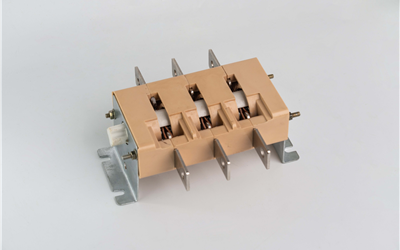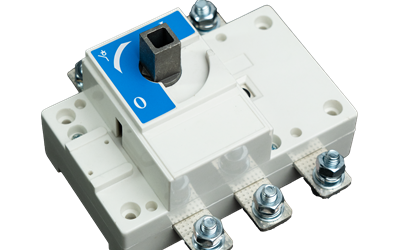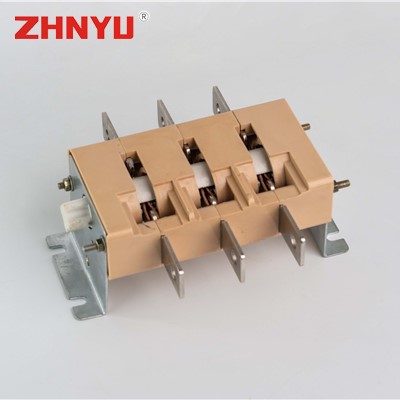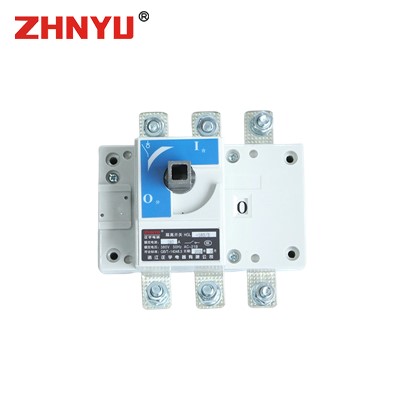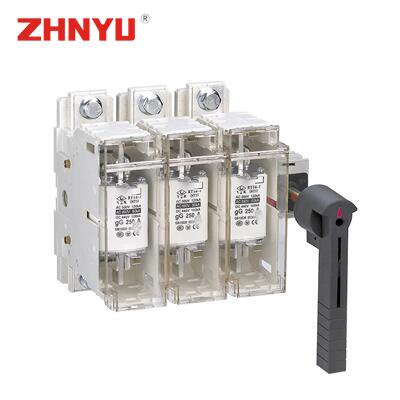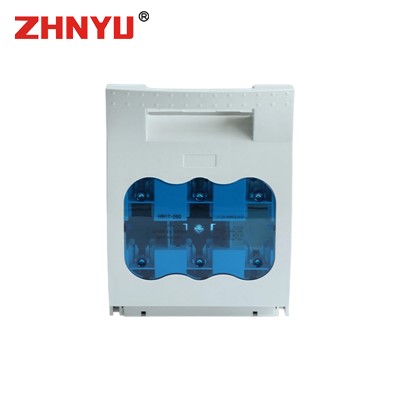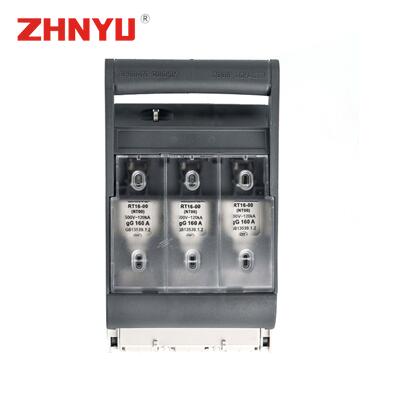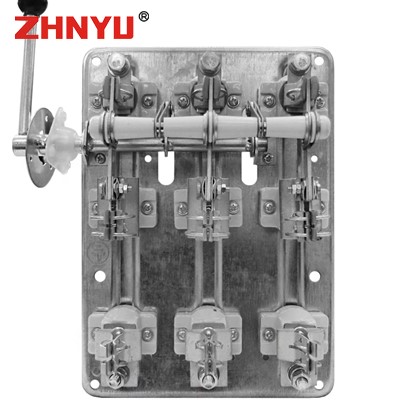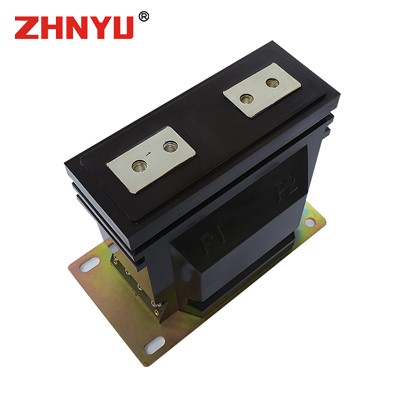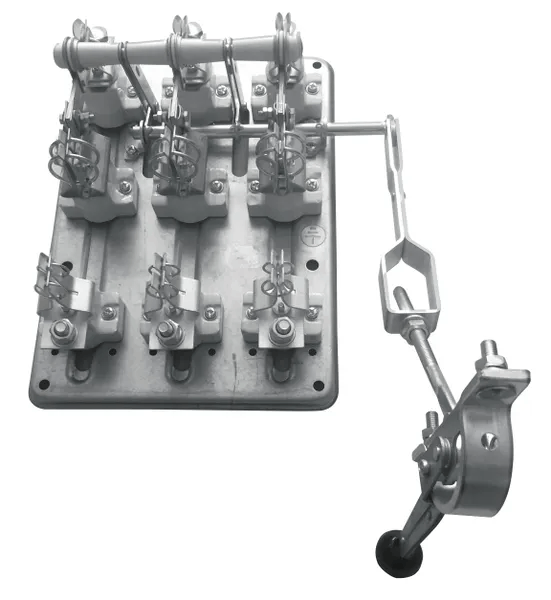
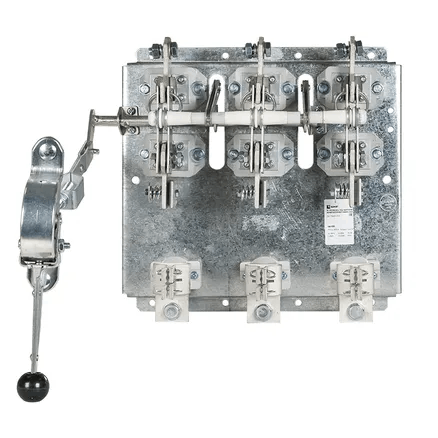
The РПС (RPS) circuit breaker is an open-type electrical device with an offset drive and fuses, designed to protect electrical circuits from short-circuit currents and prolonged overload currents. It is suitable for manually switching AC circuits with a frequency of 50 Hz and a voltage of up to 380 V. The device is widely used in power distribution panels, distribution boxes, distribution enclosures, and other electrical energy distribution equipment, providing safe and reliable protection and control for electrical systems.
Construction and Materials
The РПС (RPS) circuit breaker is mounted on a sturdy metal plate and uses porcelain insulators to fix the contact pillars, including those for fuse connections. This design enhances mechanical stability and electrical insulation. The movable knife contact is rigidly connected to a steel shaft via insulating bushes, enabling simultaneous switching of all three phases.
High-quality materials are used in the RPS circuit breaker. The metal components, such as contacts and knife blades, are made of tin-plated brass or tin-plated copper, offering excellent conductivity and corrosion resistance. Porcelain is used for insulating elements, ensuring high reliability and stable electrical characteristics.
Fuse Configuration
The РПС (RPS) circuit breaker is equipped with PN series fuses to protect circuits from overloads and short circuits. The fuse ratings match the circuit breaker's current rating, ensuring reliable protection in emergencies. The specific configurations are as follows:
Product Model
|
Fuse
|
РПС-2 250 A
|
ПН-2
|
РПС-4 400 A
|
ПН-2
|
РПС-6 630 A
|
ПН-3
|
This precise fuse configuration allows the RPS circuit breaker to provide reliable protection under various operating conditions.
Installation and Maintenance
Installing the РПС (RPS) circuit breaker is straightforward. Mount the device vertically with the hinge assembly at the bottom. The two holes marked "Ground" (20 mm in diameter) are for fixing the breaker to a metal structure. Clean these areas to a metallic sheen and apply neutral grease to prevent corrosion and ensure good electrical contact. When installing on non-conductive surfaces, place one end of a wire under a fastener in the cleaned area, connecting the other end to a grounding element.
The contact terminals of the RPS circuit breaker can connect copper and aluminum conductors (busbars, wires, cables). Wires and cables must be terminated with cable lugs for secure connections. The surfaces of the cable lugs and contact terminals must be parallel, clean (oxide-free), and coated with neutral lubricant to prevent corrosion.
Applications
The РПС (RPS) circuit breaker is widely used in various electrical distribution and control scenarios, including:
Distribution panels (ЩО-70): For centralized power management and distribution.
Incoming distribution equipment (ВРУ): As the main power distribution node in industrial and commercial settings.
Power distribution cabinets (ШРС): For power distribution in industrial and commercial settings.
Main distribution boards: As the core control device for stable electrical system operation.
Conclusion
The РПС(RPS) circuit breaker offers precise protection, efficient operation, and reliable materials, making it an ideal choice for electrical distribution and control systems. Its precise fuse configuration enhances safety and reliability, enabling it to perform well in various applications.
